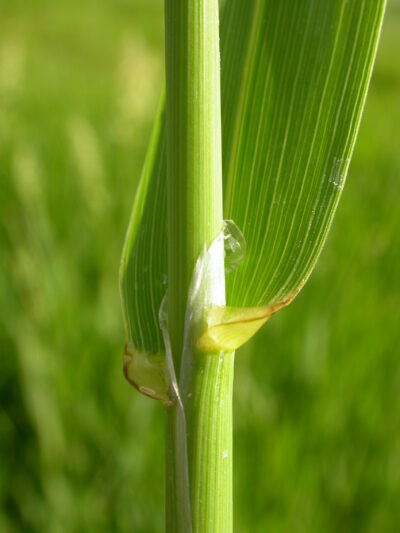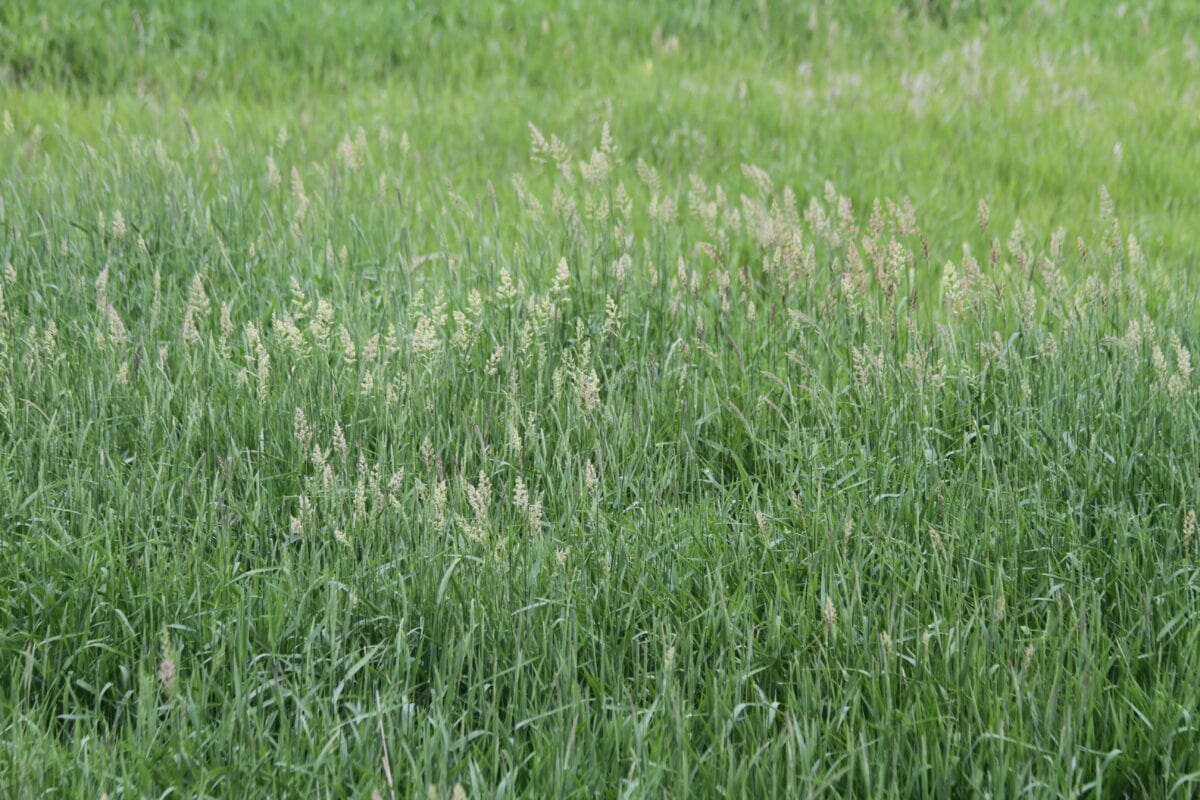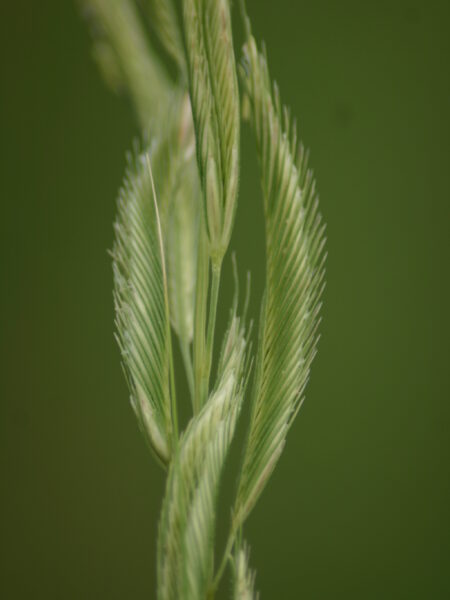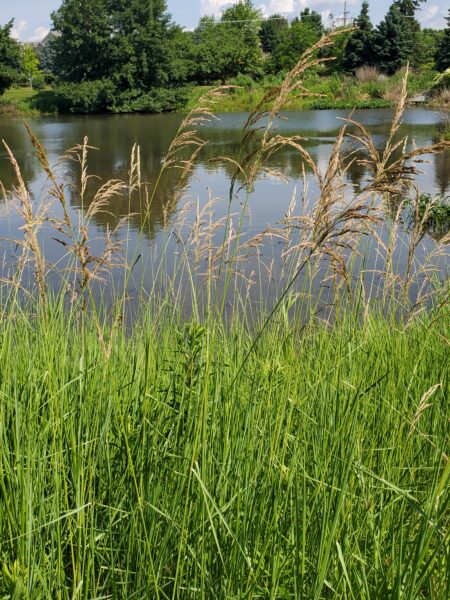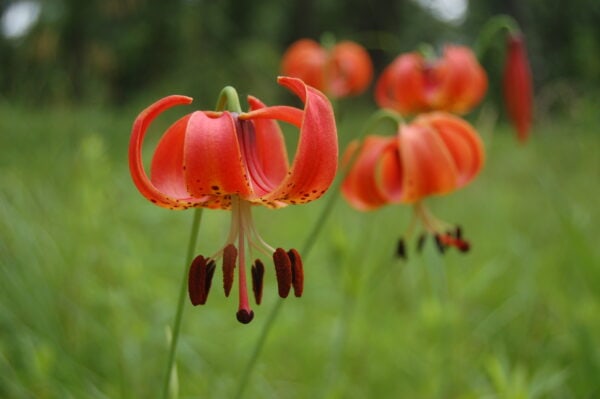
Megan Sprovach
Tallgrass Restoration, Crew Leader
Few invasive species cause more havoc in our wetlands than reed canary grass, or RCG for short. Nearly ubiquitous, this seemingly unremarkable grass has been taking over our streams, marshes, and meadows for decades, leaving little room for other plant life. How can you prevent it from taking over your yard?
What is reed canary grass?
Reed canary grass is a perennial cool-season grass that begins to grow in the spring a bit sooner than most of our native grasses. It primarily invades wetlands, forming dense stands, but it is also very drought tolerant.
The leaves are alternate, hairless, and green, although they can have purple tints when young or stressed. The stiff, upright leaves can help differentiate this plant from native grasses. Between the leaves and stems is a long, transparent piece of tissue called a ligule that can be crucial to telling this grass apart from similar ones. The flowering spikelets start out green, then transition to purplish, then brown, then tan, producing a rain of small black seeds.
The species is a prolific pollen creator and walking through a field of reed canary grass in peak flower may result in a lot of sneezing. Dormant reed canary grass turns a bleached tan and collapses into dense mats. These mats can pile up over years, blocking out sunlight for native species.
Where Did It Come From?
Reed canary grass is found in much of the northern hemisphere, and there’s a debate over how much of it in the United States is native or introduced. It has historically been established as a pasture grass, as well as a tool for erosion control. Regardless of its origins, the damage it has done to our native habitats is clear.
What Is Its Life Cycle?
Reed canary grass is one of the first cool season grasses to emerge in the spring. It grows to a height of three to five feet before going to seed. It dies down slightly throughout the summer, but may resume growth as fall approaches, when it starts to store nutrients for its winter dormancy. Reed canary grass has rhizomes that allow the plant to spread underground. The rhizomes extend far from the main plant and produce shoots at the tips. This serves as reed canary grass’s main invasion strategy.
How Can You Control it?
Once it has become established on a property, it can be quite a commitment to remove. Because of its extensive rhizome structure, it can be very difficult to control. Regular mowing will keep the reed canary grass short, and will prevent seed set if mowed when in full flower. Repeated mowing may however encourage more vigorous rhizome growth.
To reduce or eradicate reed canary grass, it is often necessary to use herbicide. Which herbicide to use will depend on the situation. An aquatic-safe formulation of glyphosate will be the best option for treating reed canary grass in wet areas, but it will also kill any other plants it comes into contact with as well. There are several herbicides that only harm grasses, such as clethodim, but these often are not safe to spray onto or near water. Always read the label and wear proper protective equipment before using herbicide.
Treating reed canary grass with herbicides will take several seasons, as much of the plants’ rhizomes remain dormant and may not absorb any chemicals. To minimize this, treat reed canary grass while the leaves and stems are actively growing. If they have reached their full height, try mowing them down and spraying them when they start growing again.
What can you plant instead?
If you’re looking for some native grasses to replace reed canary grass, you have many options. Prairie cordgrass (Spartina pectinata) does very well in wet prairies and is striking with its tall stature and unique appearance. Bluejoint grass (Calamagrostis canadensis) can look like reed canary grass, but it has thinner leaves and stands much straighter. In addition to grasses, there are a wide variety of native sedges (Carex spp.) that can serve as excellent additions to wetter habitats.

